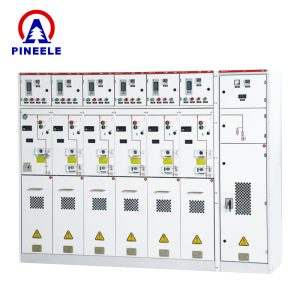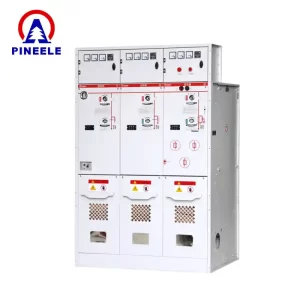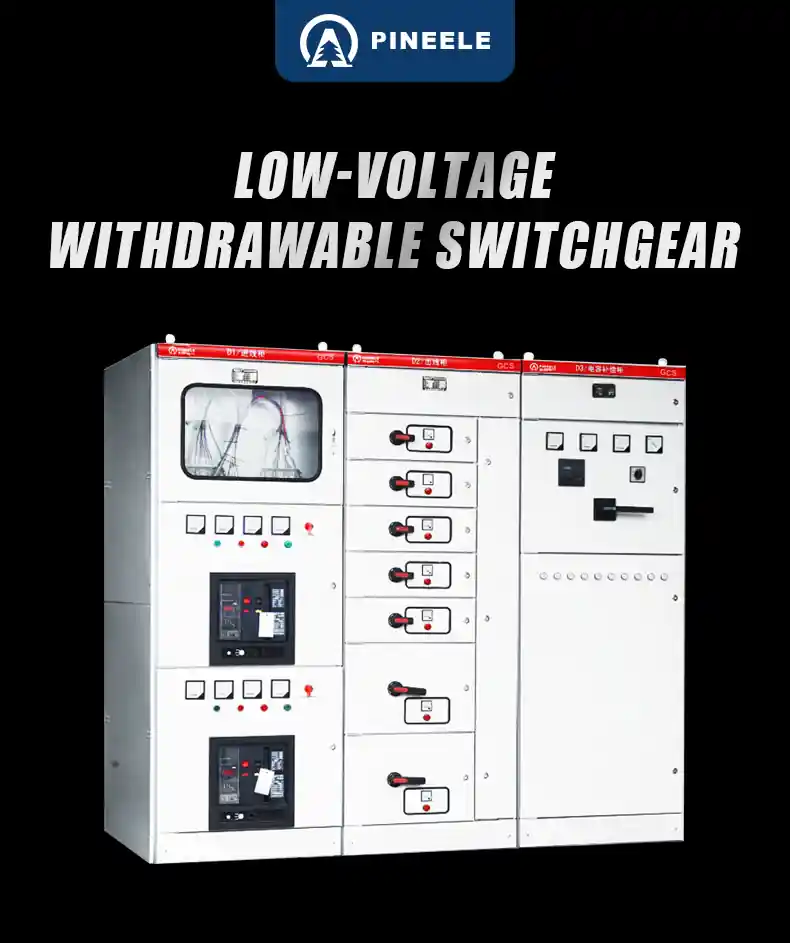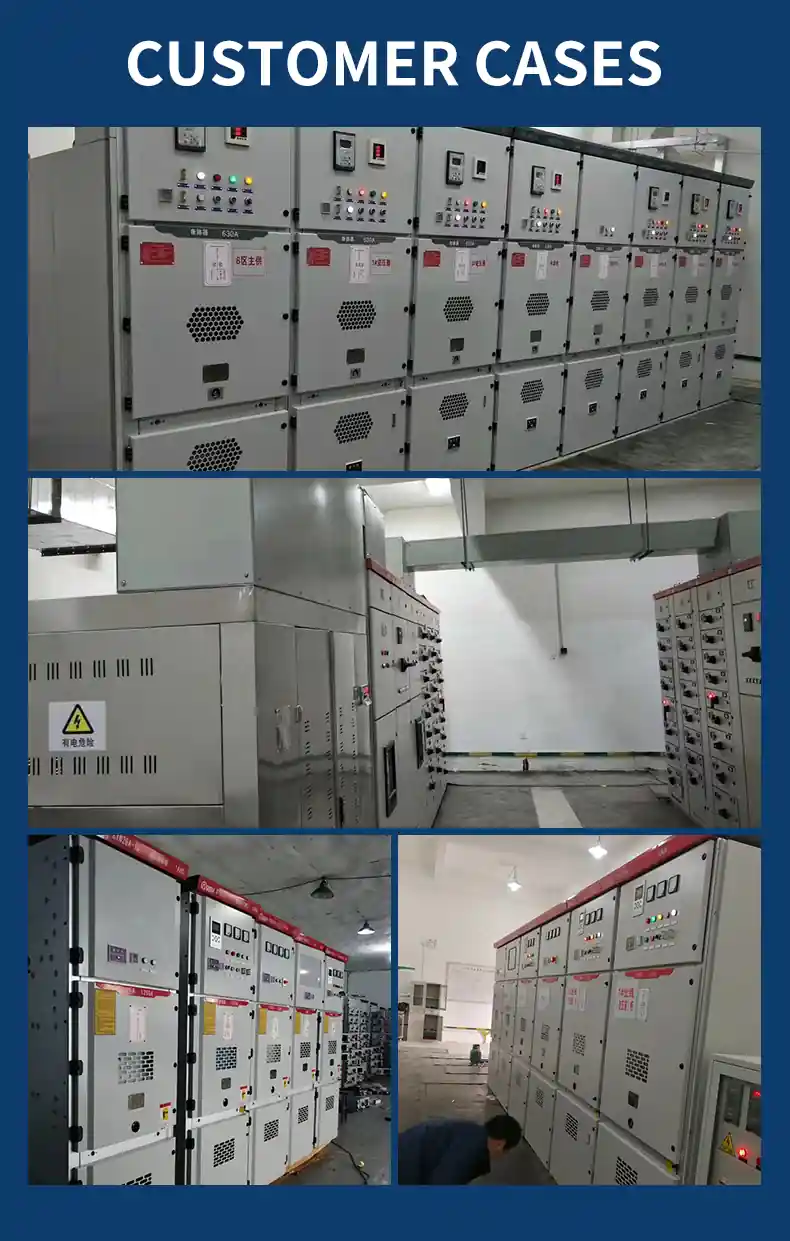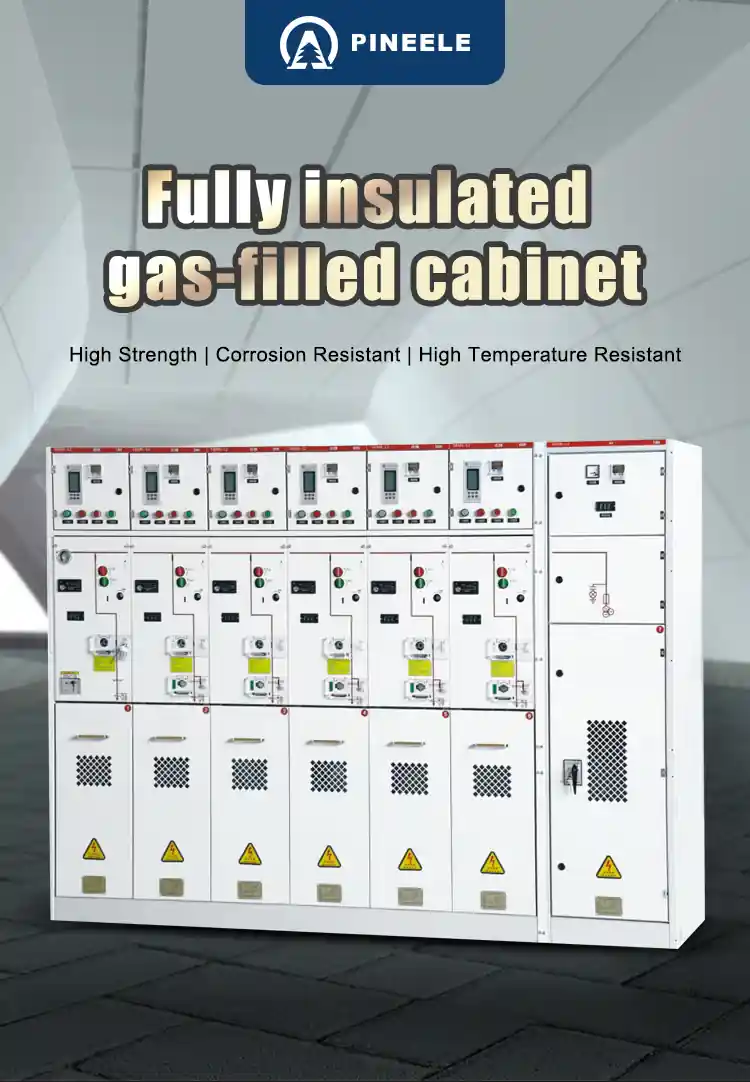
Gas-Insulated Switchgear (GIS)
Gas-Insulated Switchgear (GIS) is an advanced and compact power distribution solution that uses sulfur hexafluoride (SF₆) gas as the primary insulating medium. Compared to conventional air-insulated switchgear, GIS offers superior insulation performance, space efficiency, and enhanced safety, making it ideal for modern electrical infrastructure.
Designed for medium and high-voltage applications, GIS is widely used in substations, power plants, industrial facilities, and renewable energy projects. Its sealed and gas-insulated design eliminates exposure to environmental factors such as moisture, dust, and pollution, ensuring long-term reliability and minimal maintenance.
Key Features of Gas-Insulated Switchgear:
- Space Efficiency: Compact design significantly reduces installation footprint, making it suitable for urban areas and confined spaces.
- High Reliability: Sealed gas compartments prevent external contamination, enhancing operational safety and longevity.
- Low Maintenance: Enclosed structure minimizes the need for frequent servicing, reducing operational costs.
- Enhanced Safety: Arc-resistant construction and advanced fault detection features protect both equipment and personnel.
- Flexible Installation: Suitable for indoor and outdoor applications, adapting to diverse environmental conditions.
With the increasing demand for efficient, reliable, and space-saving power distribution, Gas-Insulated Switchgear has become a preferred choice for utilities and industries worldwide. Its ability to operate in harsh conditions while maintaining high performance makes it a crucial component in modern electrical grids.
Gas-Insulated Switchgear (GIS) – Reliable & Compact Solution
Gas-Insulated Switchgear (GIS) is a modern power distribution system that uses SF₆ gas for superior insulation and protection. Compared to traditional switchgear, GIS is more compact, durable, and low-maintenance, making it ideal for urban substations, industrial plants, and renewable energy projects.
Key Features
- Compact Design: Takes up less space, perfect for high-density areas.
- High Reliability: Fully sealed compartments prevent contamination and faults.
- Minimal Maintenance: Requires fewer inspections and reduces operational costs.
- Enhanced Safety: Arc-resistant design with automated protection features.
- Eco-Friendly Options: Newer GIS models reduce SF₆ gas emissions.
Applications
- Substations: Ensures stable power distribution with reduced land use.
- Renewable Energy: Supports solar and wind power integration.
- Industrial & Commercial: Provides reliable power for high-demand facilities.
Gas-Insulated Switchgear (GIS) - Technical Specifications
Performance Indicators
| Model | Description | Unit Code | Description |
|---|---|---|---|
| C | Standard Single-Tube Load Break Switch Unit | - | Main Busbar Top Cover |
| F | Load Break Switch & Fuse Combination Unit | SL | Bus Coupler Unit |
| V | Circuit Breaker Unit | M | Measurement Unit |
| D | Cable Entry Unit (Without Built-in Unit) | PT | PT Unit |
| + | Busbar Side Cover | 1K2 (4) | Double-Tube Load Break Switch Unit |
Technical Specifications
| Model | C Module | F Module | V Module | CB Module |
|---|---|---|---|---|
| Rated Voltage | 12kV | 12kV | 12kV | 12kV |
| Rated Frequency | 50Hz | 50Hz | 50Hz | 50Hz |
| Power Frequency Withstand Voltage (Phase/Ground) | 42/48kV | 42/48kV | 42/48kV | 42/48kV |
| Lightning Impulse Withstand Voltage | 75/85kV | 75/85kV | 75/85kV | 75/85kV |
| Rated Current | 630A | 630A | 630A | 1250/630A |
| Rated Short-Circuit Breaking Current | 20kA | 20kA | 31.5kA | 25kA |
| Rated Short-Time Withstand Current (3s) | 50kA | 50kA | 80kA | 80kA |
| Rated Peak Withstand Current | 31.5kA | 20kA | 25kA | 50kA |
| Rated Transfer Current | 1750A | - | 125A | - |
| Insulation Resistance | ≤300MΩ | ≤600MΩ | ≤600MΩ | ≤600MΩ |
| Mechanical Lifespan | 5000 Cycles | 3000 Cycles | 5000 Cycles | 5000 Cycles |
Gas-Insulated Switchgear (GIS) Overview
Gas-Insulated Switchgear (GIS) is an advanced, high-performance solution for medium and high-voltage power distribution. Unlike conventional air-insulated switchgear (AIS), GIS is housed in a sealed environment filled with sulfur hexafluoride (SF6) gas, providing superior insulation, protection, and operational reliability. This fully enclosed design eliminates the risk of environmental contamination, enhances electrical performance, and ensures long-term stability in demanding conditions.
Advantages of Gas-Insulated Switchgear
- Compact & Space-Saving: GIS has a significantly smaller footprint than traditional switchgear, making it ideal for installations in urban areas, underground substations, and offshore wind farms.
- High Insulation & Protection: The use of SF6 gas provides exceptional insulation properties, reducing the risk of electrical faults and enhancing the switchgear’s dielectric strength.
- Environmental & Weather Resistance: Sealed gas compartments protect internal components from humidity, dust, pollutants, and extreme weather conditions, ensuring consistent performance.
- Enhanced Safety: GIS systems are designed to prevent arc flash incidents, offering a safer working environment for personnel.
- Minimal Maintenance: The enclosed design prevents exposure to air and moisture, reducing the frequency and cost of maintenance.
- Long Service Life: With minimal wear and tear, GIS can operate efficiently for decades, making it a cost-effective investment for power utilities.
Applications of Gas-Insulated Switchgear
Gas-Insulated Switchgear is widely used across multiple industries and power networks due to its reliability and efficiency. Key application areas include:
- Utility Substations: GIS is a preferred choice for power transmission and distribution substations due to its reliability and reduced space requirements.
- Industrial Facilities: Heavy industries such as manufacturing plants, chemical facilities, and refineries use GIS to ensure stable and efficient power distribution.
- Renewable Energy Plants: GIS is widely adopted in solar farms, wind power plants, and hydroelectric stations, where compact and reliable switchgear is necessary.
- Urban & Underground Power Grids: Due to its compact nature, GIS is commonly installed in high-density urban areas and underground substations to optimize space usage.
- Offshore & Marine Applications: GIS is resistant to saltwater corrosion and harsh offshore conditions, making it ideal for marine power networks and oil rigs.
- Railway & Transportation Systems: Metro stations, railway power grids, and airports benefit from the enhanced safety and reliability of GIS.
Key Features of GIS Technology
- Sealed & Insulated Design: GIS prevents exposure to air, dust, and contaminants, enhancing insulation and reducing the risk of failure.
- Modular Configuration: GIS can be expanded or customized based on specific voltage levels, power capacities, and operational requirements.
- Intelligent Monitoring & Automation: Equipped with digital monitoring systems, GIS allows remote operation, real-time diagnostics, and predictive maintenance.
- Arc Fault Containment: The enclosed gas-insulated structure prevents arc flashes and enhances electrical safety.
- High Reliability in Harsh Environments: GIS is designed to function efficiently in extreme conditions, including deserts, high-altitude areas, and coastal regions.
Future Trends in Gas-Insulated Switchgear
With the increasing demand for sustainable and efficient power distribution, the GIS market is evolving towards more environmentally friendly alternatives. Innovations include:
- Eco-Friendly Insulating Gases: Research is ongoing to replace SF6 with environmentally friendly alternatives like g3 and dry air to reduce greenhouse gas emissions.
- Smart Grid Integration: GIS is being developed with IoT-enabled sensors for advanced grid automation and real-time data analytics.
- Modular & Prefabricated GIS Solutions: Pre-assembled GIS units enable faster deployment, reducing installation time and costs.
- Hybrid Switchgear Systems: Combining GIS with air-insulated or vacuum-insulated components for optimized performance and cost savings.
Gas-Insulated Switchgear is a highly reliable, space-saving, and durable solution for modern power distribution needs. Its ability to withstand harsh conditions, combined with enhanced safety features and minimal maintenance, makes it the preferred choice for power utilities, industries, and infrastructure projects worldwide. As technology advances, GIS will continue to play a crucial role in shaping the future of power networks, ensuring efficiency, sustainability, and operational resilience.
Gas Insulated Switchgear Uses
Gas Insulated Switchgear (GIS) is a compact and efficient solution for power distribution, using SF6 gas for insulation and arc fault protection. It is widely used in power grids, industrial systems, and renewable energy applications.
Applications of Gas Insulated Switchgear
- Utility Substations: Ensures stable power transmission with minimal space requirements.
- Industrial Facilities: Provides reliable power for manufacturing and automation.
- Renewable Energy: Supports solar and wind farms with efficient energy transmission.
- Urban Grids: Ideal for underground and space-constrained installations.
- Transportation: Powers metro, railways, and airports with high reliability.
Why Choose Gas Insulated Switchgear?
- Compact Design: Requires less space compared to air-insulated systems.
- High Safety: Sealed gas insulation prevents arc faults.
- Low Maintenance: Minimal environmental exposure extends lifespan.
- Reliable Performance: Long-term stability in harsh conditions.
Gas Insulated Switchgear is a key component in modern power networks, offering safety, efficiency, and space-saving advantages.
